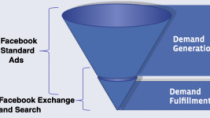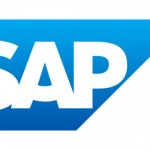Facebook’s Dynamic Creative Ads Lead to More Clicks
This past summer, Facebook began letting advertisers retarget its users based on their off-Facebook browsing behavior through Facebook Exchange (FBX). Early results released last month were encouraging, with multiple partners claiming that FBX ads outperformed retargeting campaigns run on other exchanges.
But for FBX’s first couple of test months, companies had to queue up relatively generic ads. Macy’s could run an ad targeting a user that had visited its site in the past, but the retailer couldn’t make sure the ad featured a particular dress that user had just looked at—until recently.
On August 20, Facebook began testing with a number of FBXpartners the ability to use their own dynamic creative products on the exchange. The performance of those even more tailored ads best the already outperforming standard FBX ads, according to AdRoll and TellApart, two of the first companies to run dynamic creative through FBX. Retargeting firm Criteo said late last month that it planned to roll out the capability by the end of the year.
AdRoll has more than 100 advertisers running static campaigns on FBX. Five to 10 of them are using AdRoll’s Liquid Ads product, which retargets users with ads featuring either the product a user had viewed on an advertiser’s site or relevant products à la Amazon’s product recommendation tool.
“It’s basically a personalized ad solution so that instead of our advertisers having to present the same creative, they can automatically and very efficiently change creative on an individual user level,” said AdRoll president Adam Berke.
Starting last month, AdRoll has been trialing dynamic creative with a handful of clients and alternating the dynamic creative equally with static ads. Since then, AdRoll has seen, on average, a 102 percent higher clickthrough rate (CTR) than the static ads, said Berke. Since FBX ads are bought on a cost-per-thousand-impressions basis, the dynamic ads cut advertisers’ cost per click in half, he said.
“The doubling of the clickthrough is more than we even saw [using Liquid Ads] in standard display,” Berke said. Part of that can be attributed to picking off low-hanging fruit. Facebook’s seemingly endless inventory—the site served 28 percent of total U.S. impressions last year—raises the risk of serving users the same ads over and over again. However, dynamic ads keep things fresh by constantly cycling in new creative, he said.
TellApart seems to have proven Berke’s hypothesis true. Normally companies calculate clickthrough rates on a per-impression basis, or, how many clicks an ad received per number of times it was served. But those ads could conceivably (though not likely) be served to the same user. Instead, TellApart—which has transitioned all of its 30-plus clients on FBX to dynamic creative—measures user clickthrough rate, or how many users to whom ads are served chose to click. By that measurement, the company has seen a 6.65 percent user CTR for its dynamic ads run through FBX, which beats the 6.41 percent those ads see on Google’s AdX exchange.
TellApart’s technology doesn’t just deem which product a retargeted ad should feature. The company also calculates a Customer Quality Score. That measure is calculated from roughly 300 data signals—such as how a user navigated to a page, whether they’ve been to a site before, time of day, and the country they’re coming from—”to target ads as well as determine which users would purchase the advertised product at face value and which should receive a special offer, such as free shipping or a discount code. When running these dynamic offers through FBX, TellApart’s advertisers see on average a 40 percent higher conversion rates.
“On Facebook now, you have the chance to do one-to-one marketing, not just on the products [shown] but any offers associated with the products,” said TellApart cofounder and CEO Josh McFarland, who claimed his company was the first to run dynamic creative on FBX.
What McFarland calls one-to-one marketing, others could consider discriminatory. To McFarland, it’s giving higher-value users different offers. “I think when it comes to rewarding loyalty and customer quality, most people are understanding of the fact that an offer can be something not everybody is able to get,” McFarland said.











